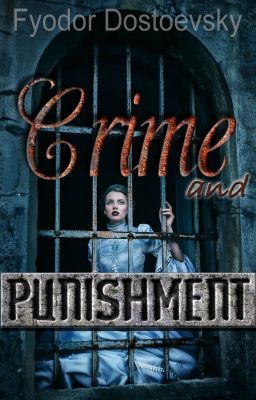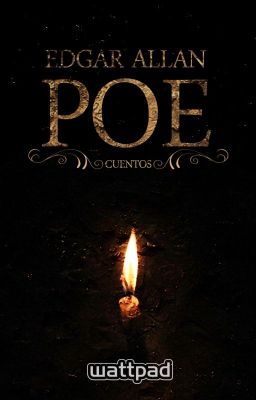books
20 stories
FydorDostoevsky
- Reads 94,309
- Votes 2,343
- Parts 42
Crime and Punishment is a novel by the Russian author Fyodor Dostoevsky. It was first published in the literary journal 'The Russian Messenger' in twelve monthly installments during 1866. Later, it was published in a single volume. It is the second of Dostoevsky's full-length novels following his return from 5 years of exile in Siberia. Crime and Punishment is considered the first great novel of his "mature" period of writing.
Crime and Punishment focuses on the mental anguish and moral dilemmas of Rodion Raskolnikov, an impoverished ex-student in Saint Petersburg who formulates a plan to kill an unscrupulous pawnbroker for her money. Before the killing, Raskolnikov believes that with the money he could liberate himself from poverty and go on to perform great deeds; but confusion, hesitation, and chance muddy his plan for a morally justifiable killing.
Cover made by the amazing Amber @The3dreamers.
WattpadClasicosES
- Reads 267,170
- Votes 10,293
- Parts 45
Historias góticas llenas de misterio, de terror con una prosa magnífica que solo puede llevar el sello de Edgar Allan Poe. El gato muerto, Berenice o el corazón delator son solo alguno de los maravillosos relatos que podrás encontrar en la obra de un autor que ha sido inspiración de muchos y admirado por una gran multitud.
EdgarAllanPoe
- Reads 7,233
- Votes 178
- Parts 9
"The Murders in the Rue Morgue" is a short story by Edgar Allan Poe published in Graham's Magazine in 1841. It has been recognized as the first modern detective story; Poe referred to it as one of his "tales of ratiocination".
C. Auguste Dupin is a man in Paris who solves the mystery of the brutal murder of two women. Numerous witnesses heard a suspect, though no one agrees on what language was spoken. At the murder scene, Dupin finds a hair that does not appear to be human.
As the first fictional detective, Poe's Dupin displays many traits which became literary conventions in subsequent fictional detectives, including Sherlock Holmes and Hercule Poirot. Many later characters, for example, follow Poe's model of the brilliant detective, his personal friend who serves as narrator, and the final revelation being presented before the reasoning that leads up to it. Dupin himself reappears in "The Mystery of Marie Rogêt" and "The Purloined Letter".
HPLovecraft
- Reads 4,886
- Votes 111
- Parts 1
The Alchemist, by H.P. Lovecraft.
This short story was written in 1908, and first published in the November 1916 issue (No. 4) of the United Amateur.
+4 more
NathanielHawthorne
- Reads 22,407
- Votes 605
- Parts 26
The Scarlet Letter: A Romance is an 1850 novel in a historical setting, written by American author Nathaniel Hawthorne.
The book is considered to be his "masterwork". Set in 17th-century Puritan Massachusetts Bay Colony, during the years 1642 to 1649, it tells the story of Hester Prynne, who conceives a daughter through an affair and struggles to create a new life of repentance and dignity.
Throughout the book, Hawthorne explores themes of legalism, sin, and guilt.
Homer
- Reads 24,999
- Votes 281
- Parts 25
The Odyssey (Greek: Ὀδύσσεια Odýsseia] in Classical Attic) is one of two major ancient Greek epic poems attributed to Homer. It is, in part, a sequel to the Iliad, the other work ascribed to Homer.
The Odyssey is fundamental to the modern Western canon, and is the second-oldest extant work of Western literature; the Iliad is the oldest. Scholars believe the Odyssey was composed near the end of the 8th century BC, somewhere in Ionia, the Greek coastal region of Anatolia.
The poem mainly focuses on the Greek hero Odysseus (known as Ulysses in Roman myths), king of Ithaca, and his journey home after the fall of Troy. It takes Odysseus ten years to reach Ithaca after the ten-year Trojan War. In his absence, it is assumed Odysseus has died, and his wife Penelope and son Telemachus must deal with a group of unruly suitors, the Mnesteres (Greek: Μνηστῆρες) or Proci, who compete for Penelope's hand in marriage.
+2 more
gustaveflaubert
- Reads 24,693
- Votes 650
- Parts 35
Madame Bovary. Madame Bovary is the debut novel of French writer Gustave Flaubert, published in 1856. The story focuses on a doctor's wife, Emma Bovary, who has adulterous affairs and lives beyond her means in order to escape the banalities and emptiness of provincial life.
Cover done by @Emnabm2
Homer
- Reads 25,714
- Votes 369
- Parts 26
The Iliad (sometimes referred to as the Song of Ilion or Song of Ilium) is an ancient Greek epic poem in dactylic hexameter, traditionally attributed to Homer. Set during the Trojan War, the ten-year siege of the city of Troy (Ilium) by a coalition of Greek states, it tells of the battles and events during the weeks of a quarrel between King Agamemnon and the warrior Achilles.
The Iliad is paired with something of a sequel, the Odyssey, also attributed to Homer. Along with the Odyssey, the Iliad is among the oldest extant works of Western literature, and its written version is usually dated to around the 8th century BC. Recent statistical modelling based on language evolution gives a date of 760-710 BC.
EdgarAllanPoe
- Reads 7,340
- Votes 497
- Parts 1
"The Bells" is a heavily onomatopoeic poem by Edgar Allan Poe which was not published until after his death in 1849. It is perhaps best known for the diacopic use of the word "bells." The poem has four parts to it; each part becomes darker and darker as the poem progresses from "the jingling and the tinkling" of the bells in part 1 to the "moaning and the groaning" of the bells in part 4.
Cover by: @CaffeinatedKiwi








